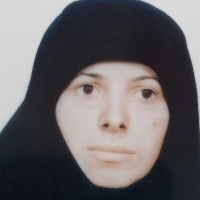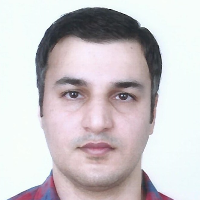Urban-Poverty Spatial Analysis, Using Factor-Analysis Method(Case Study: Qaa'emshahr City)
Author(s):
Article Type:
Research/Original Article (دارای رتبه معتبر)
Abstract:
problem statement
One of the greatest Urban challenges, is the formation and focusing of poverty phenomenon.
Purpose
The purpose of this research is to analyze the spatial distribution of indicators and measures of urban poverty, in the Qaa'emshahr city.
Methodology
The method of the present research is descriptive-analytic, and in terms purpose, is applied. The data related to the theoretical foundations of the research, were prepared using documentary sources; while, the raw data of the research were extracted from the statistical urban blocks, based on the 1390 National Census. We benefited from Fuzzy Method for unscaling the indicators of urban poverty, and factor analysis method, to measure the poverty situation in Qaa'emshahr. We used Excel software, to measure urban poverty indicators. Then, we used in SPSS software for factor analysis. For Spatial Analysis, we used hot spots Method and Moran spatial autocorrelation in Gis software environment.
Results
results show that poverty in the city of Qaa'emshahr has cluster distribution and spatial autocorrelation. Most of hot spots are in outer and peripheral parts of Qaa'emshahr city, and most of cold spots are in the central, east, as well as parts of the south west parts of the city to parts of the city. Based on the foundings, 46.7% of the area, and 35.1% of the population of the city of Qaa'emshahr, are discerned as poor and very poor. Also, the central parts of the city are covered by the very affluent and affluent blocks, and in the outer and peripheral parts of the city, there are blocks of poor and very poor; showing a massive gap in different parts of the Qaemshehr city.
Innovation
Among the innovations of this research, are the use of new indicators such as the percentage of unmarried people, the percentage of immigrants entered, and the percentage of sigle-room residential units; as well as using fuzzy method for non-scaling of urban poverty indicators.Keywords:
Language:
Persian
Published:
spatial planing, Volume:9 Issue: 1, 2019
Pages:
103 to 124
https://magiran.com/p1971430
مقالات دیگری از این نویسنده (گان)
-
Investigating the Spatiotemporal Pattern of Accident Hot spot in Firoozkooh Road using Geographical Information System
Jalal Samia *, Manouchehr Ranjbar Shoobi,
Geographical Planning of Space Quarterly Journal, -
Evaluating the Components of a Child-Friendly City (A Case Study of Amol)
Zahra Barandeh, , Naser Aligholiadeh Firouzjaee *
Journal of SHAHR-HA, -
Studying informal settlements with livability approach (Case study: Sari informal settlements)
*, Kobra Aghajani, Rahimberdi Annamoradnejad
Research and Urban Planning, -
Identifying and Explaining Urban Resilience Indicators with a Passive Defense Approach (Case Study: Tehran Metropolis)
Rasoul Afsari *,
Human Geography Research Quarterly, -
Monitoring changes in the network of urban settlements in the south region of Iran
*
Journal ofof Regional Planning, -
Spatial analysis of urban livability at the neighborhood level of Tehran city
Mohammad Soleymani Lamyani, *, , Hamed Abbasi
Journal of Geographical Research on Desert Areas,




